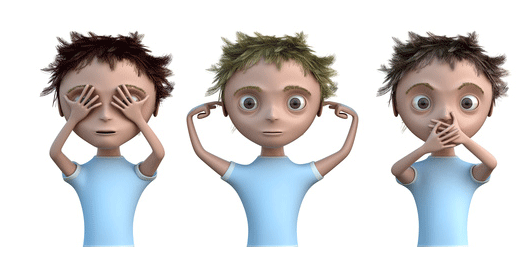Lesson 7: Planning for Language and Literacy Development
Attention

Learning Outcomes
Upon completion of this lesson's material, students will be able
-
Explain how communication disorders effect language and literacy development.
-
Explain how modifications are used to assist with communication development.
-
Explain how the Maine Infant/Toddler Guidelines and the Maine Early Learning Guidelines are used for children with a disability.
Teaching
A communication disorder is an impairment in the ability to receive, send, process, and comprehend information. Some children are born with a disability that impacts their communication skills and other children develop communication disorders as they grow. It is not always obvious when a child has a communication disorder and just because children have a disability, it doesn’t mean that they will have a communication disorder. However, as early childhood educators, it is our responsibility to know the milestones for communication development. When we are well versed in the communication milestones we are then able to make informed next steps for early intervention if needed. You will learn more about children with disabilities in a later class but for now I want you to think about how your five senses impact your ability to communicate and what happens when you are limited in your ability to use them.
In these video clips you will see how children (who are limited by one or more of their senses due to a disability) are figuring out how to communicate. While watching take note which senses they are using to communicate and which senses they are limited with. Pay close attention to how they manage to receive, send, process and comprehend information. Then we will take a look into the guidelines to match our observations with domain elements and/or indicators.
For the assginments,
-
Watch Toddlers Chatting in Car (Video embedded below. If you are unable to watch the embedded video, you can watch it here.)
-
Watch Blind Toddler with Can (Video embedded below. If you are unable to watch the embedded video, you can watch it here.)
-
Watch Making a Choice (Video embedded below. If you are unable to watch the embedded video, you can watch it here.)
Assessment
Lesson 7 Quiz
-
For each video list describe ALL communication indicators that you noticed (be specific in what you observed). Also list the indicators that you did NOT notice or are unsure of. Also for each video, explain why having communication is important for each of these children and what kind of assistance they may or may not need when communicating.
-
What senses were NOT used and/or limited in their ability to communicate and how?
-
Explain why having communication is important for each of these children and what kinds of assistance and/or modifications were made so they could be successful.
-
Match your observation to the MITG or MELG. What elements and/or indicators were not present? If not already present in the video, what kind of assistance or modification would you suggest?
Possible Class Discussion A
Does having a disability have to mean you have a language delay? Why or why not? Does it matter to the degree of disability? Why or why not?
Possible Class Discussion B
What would literacy development look like for these children? Provide two examples for each child about how you would promote literacy development.